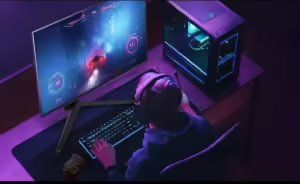According to Omdia, monitor OLED shipments in May increased by 65.8% month-on-month and 134.1% year-on-year to 199,000 units, the highest monthly shipment ever recorded. In 2023, Samsung Display shipped 538,000 OLED monitor units, while LG Display shipped 284,000 units. Now, The Elec is reporting that Samsung and LG are collaborating on W-OLED because of its cost efficiency. W-OLED has a lower manufacturing cost compared to QD-OLED, which could help Samsung reduce overall production costs and potentially offer more competitively priced OLED monitors.
Even if the supply agreement is reached, Samsung Electronics will need to wait until at least the first half of next year to begin mass production of W-OLED monitors, according to the report, because of the complexity of integrating new display technologies into existing production lines.
| Feature | QD-OLED Manufacturing | WOLED Manufacturing |
| Light Source | Blue OLED light-emitting source. | White OLED light-emitting source. |
| Color Conversion | Quantum dots convert blue light into red and green. | Color filters split white light into red, green, and blue, with an additional white subpixel (RGBW configuration). |
| Subpixel Structure | Triangular arrangement of red, green, and blue subpixels. | Rectangular arrangement with red, green, blue, and white subpixels. |
| Layering Process | Requires precise deposition of a quantum dot layer above the blue OLED layer. | Involves a single white OLED layer with color filters on top. |
| Manufacturing Complexity | Higher complexity due to the need to manage interactions between the blue OLED and quantum dot layers, ensuring accurate color conversion and brightness. | Simpler process as it only involves creating a white OLED layer and applying color filters, but less efficient due to light loss through filters. |
| Efficiency | Higher efficiency as quantum dots are excellent at converting light without additional electrical charges, leading to more vivid colors and brightness. | Less efficient as the color filters block some of the white light, reducing overall brightness and color purity. |
Samsung Display’s QD-OLED monitors come in 27-inch, 31.5-inch, 34-inch, and 49-inch format; LG Display’s W-OLED monitors are available in 27-inch, 31.5-inch, 34-inch, 39-inch, and 45-inch formats Switching to WOLED would necessitate reconfiguring the multi-model glass (MMG) process Samsungs uses to handle the different panel structure and potentially different panel sizes of WOLED monitors.

